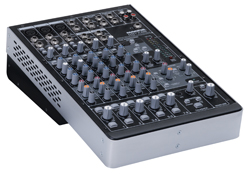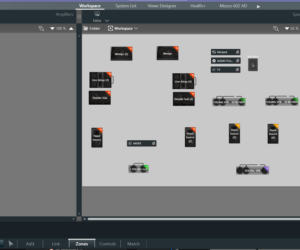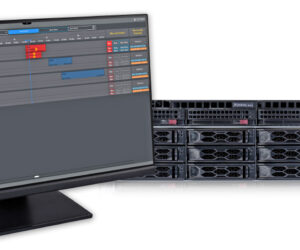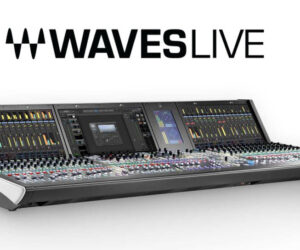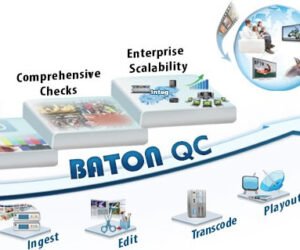As noted a couple of weeks ago, I received a new Mackie Onyx-i Series mixer/interface that will run Pro Tools without the need for Avid hardware. (Read all about it here in Part 1 of this report)
My first inclination was to take it to the studio and try it out, and then I got to thinking that actually, a lot of people interested in buying this system might/probably be more likely to be using it in a home situation.
So instead I set up the Onyx mixer with my home PC laptop running Vista Home Premium (ugh), a set of headphones, and an inexpensive microphone. (Later, I took it into a bigger “pro” studio and also evaluated the M-Powered capability, and that will be the subject of my next report.)
The Onyx-i 820i that was supplied to me offers 8 channels, 3 of them with Onyx mic preamps, It’s also outfitted with a variety of Perkins EQ configurations, two aux sends, talkback controls, and flexible control room routing.
FireWire I/O lets you route all channels, auxes and the master L/R to many DAW software programs, (such as Pro Tools M-Powered 8, Logic, SONAR, Cubase, Ableton Live, and Final Cut Pro) for recording, and enables you to return a stereo signal to the control room, or into a channel, for mix integration.
I decided to first listen to the mixer, alone, using a set of Audio-Technica D40 fs headphones and a Audio-Technica M31 dynamic cardioid microphone – decent quality pieces that would be comparable, in price, when matched with the Onyx-i/Pro Tools 8 M-Powered combination.
For years I’ve used a Mackie 1202 mixer basically as a “volume control” for my powered KRK-V88 monitors, and I’ll occasionally use the EQ and mic preamps, so I have a frame of reference for the mixer comparisons.
The “boutique style” preamps on the Onyx-i definitely sound better than the 1202 preamps, with an overall richer sound – a fuller, more rounded bottom end and a smoother top, as well as less noise. It will be interesting to compare the Onyx-i preamps to actual “boutique preamps” in the studio, using both the same microphone as well as “studio quality” condenser models.
Turning to the EQ… I wasn’t sure what a “Perkins EQ” was, so I found this definition on line: “A Mackie trade name for equalizer circuitry employed in their Onyx mixer series. The name refers to Cal Perkins, a veteran Mackie engineer who had previously done work for Marantz, JBL, and Fender.
.
“Perkins started with the Wien Bridge circuit topology – a design inspired by the hallowed ‘British’ consoles of the ‘60s and ‘70s. This design essentially trades boost/cut capability for a wider, highly musical Q filter. He then specified capacitor and resistor values that would give Onyx mixers an extra 6 dB of control (+/-15 dB) without excessively narrowing the Q filters.
“Perkins also employed combining filters for minimum phase shift. The result is very musical EQ that provides a wide-ranging yet natural sounding boost or cut.“
Very good.
Now, my observations.


